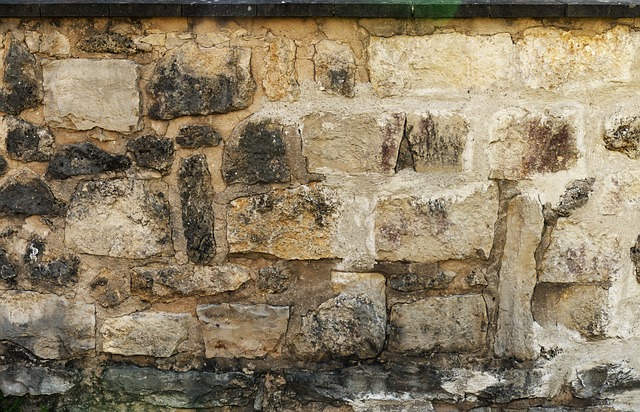Retainers After Wisdom Teeth Extraction: A Friendly Guide
Welcome to our friendly guide on retainers after wisdom teeth extraction! Your journey to a healthy and pain-free smile doesn’t end with the removal of your wisdom teeth; it actually continues right through the recovery process. We understand that wisdom teeth extraction can cause anxiety and uncertainty, but fear not! In this informative article, we will walk you through everything you need to know about retainers and how they play a crucial role in ensuring your teeth stay aligned and your beautiful smile remains intact. So, sit back, relax, and let us guide you through the ins and outs of retainers after wisdom teeth extraction.
1. Why Retainers Matter: Ensuring a Beautiful Smile Post-Wisdom Teeth Extraction
After undergoing wisdom teeth extraction, it is crucial to understand why retainers play a significant role in maintaining a beautiful smile. Retainers provide the necessary support and stability to keep your teeth aligned and prevent any potential shifting. Here’s why retainers are essential:
- Preservation of Alignment: Retainers ensure that your teeth remain in the corrected position after wisdom teeth extraction. They help maintain the alignment achieved through orthodontic treatment and prevent any relapse.
- Prevention of Crowding: Retainers help prevent crowding by keeping the teeth in their proper positions. This is especially vital after wisdom teeth removal, as the newly vacant spaces could lead to neighboring teeth shifting out of place.
- Protection of Orthodontic Investment: Wearing a retainer not only preserves the results achieved through orthodontic treatment but also protects the investment of time and money you have made towards achieving a beautiful smile.
By wearing a retainer as prescribed by your orthodontist, you provide stability to your post-wisdom teeth extraction smile and ensure long-lasting results. Retainers are custom-made to fit your mouth and are typically worn for a specified period. Remember, consistent use and proper maintenance will help you maintain that beautiful smile you’ve worked so hard for!

2. The Role of Retainers in Maintaining Teeth Alignment after Wisdom Teeth Removal
Why Retainers are Essential
After having your wisdom teeth removed, it is crucial to understand the importance of wearing retainers in maintaining the alignment of your teeth. Retainers serve as a safeguard against shifting or crowding, ensuring all the time, effort, and invested funds in braces don’t go to waste. Here’s why retainers should be your best friend post-surgery:
- Stabilize Teeth: Retainers aid in keeping your teeth in their intended position, preventing any unwanted movement that can occur during the recovery process.
- Promote Healing: By ensuring your teeth remain in the correct alignment, retainers help in promoting proper healing and recovery, minimizing any discomfort or complications.
- Prevent Relapse: Your teeth have a natural tendency to shift over time, especially after wisdom teeth extraction. Wearing retainers regularly prevents the chances of relapse, maintaining the desired alignment achieved through orthodontic treatment.
Types of Retainers
There are two common types of retainers prescribed after wisdom teeth removal:
- Hawley Retainers: This traditional retainer consists of a plastic piece that lies against the roof of your mouth and wire that encircles your teeth. Custom-made to fit your mouth, they are adjustable and easy to remove for cleaning.
- Essix Retainers: These retainers are made of clear plastic and fit snugly over your teeth. They are almost invisible and provide a more aesthetically pleasing option than Hawley retainers.
Whichever type is recommended by your orthodontist, it is vital to wear it as instructed. Remember, investing a little time and effort in wearing your retainer will go a long way in maintaining your beautifully aligned smile.

3. Retainers 101: Everything You Need to Know About Post-Extraction Care
After getting your teeth extracted, it’s crucial to understand the importance of post-extraction care. Retainers play a significant role during this recovery phase, ensuring your teeth remain properly aligned and preventing any potential issues down the line. Here’s everything you need to know about retainers and how to take care of them:
Types of Retainers:
- Hawley Retainers: These are the most common type of retainers, consisting of a plastic or acrylic base that sits on the roof of your mouth. A metal wire runs across the front of your teeth to keep them aligned.
- Essix Retainers: These retainers are made of clear plastic material and fit snugly over your teeth, making them less noticeable than Hawley retainers.
Retainer Care Tips:
- Always clean your retainer daily using a toothbrush and mild soap or denture cleaner.
- Remove your retainer before eating or drinking anything other than water to prevent damage or staining.
- Store your retainer in its protective case whenever it’s not in use to avoid misplacing or damaging it.

4. How Retainers Help Preserve Individual Tooth Positions after Wisdom Teeth Extraction
After getting your wisdom teeth extracted, it’s important to preserve the alignment of your remaining teeth. That’s where retainers come in! Retainers are custom-made orthodontic devices that help maintain the positions of your individual teeth and prevent them from shifting or crowding.
Here’s how retainers can help preserve your smile:
- Stabilization: Retainers act as a stable platform, ensuring that your teeth don’t move back to their original positions after wisdom teeth extraction.
- Guidance: By providing gentle pressure, retainers guide your teeth into their optimal positions, promoting proper alignment and bite.
- Protection: Retainers protect your investment in orthodontic treatment, preventing the need for further corrective procedures in the future.
- Comfort: Made from durable materials, retainers are designed to fit snugly and comfortably, allowing for easy, hassle-free wear.
No matter how your wisdom teeth extraction occurred, incorporating retainers into your post-extraction care will help ensure your teeth remain beautifully aligned. Be sure to follow the instructions provided by your dentist or orthodontist for best results!

5. A Step-by-Step Guide to Wearing and Caring for Your Retainers Following Wisdom Teeth Removal
After having your wisdom teeth removed, it’s crucial to properly care for and wear your retainers to ensure a smooth recovery process. Here’s a step-by-step guide to help you through it:
1. Cleanliness comes first: Make sure to thoroughly clean your retainers before putting them in. Brush them gently with a soft toothbrush and mild soap, or use non-alcoholic mouthwash to rinse them off. It’s important to keep your retainers clean to prevent any bacteria build-up.
2. Wear your retainers religiously: Your dentist will recommend how long you should have your retainers on each day. Typically, it’s around 20-22 hours a day for the initial few weeks, and then gradually reduced. Consistency is key! Whether it’s day or night, keep your retainers in as instructed to ensure your teeth stay in their new positions.
6. Common Myths Debunked: Understanding the Truth Behind Retainers after Wisdom Teeth Extraction
After getting your wisdom teeth removed, you may have heard a lot of different opinions about the use of retainers. To clear up any confusion, let’s debunk some common myths and uncover the truth behind using retainers after wisdom teeth extraction.
Myth #1: You don’t need a retainer after wisdom teeth extraction.
- Busted! While it’s true that wisdom teeth extraction may not directly affect the alignment of your front teeth, wearing a retainer is still crucial.
- A retainer helps maintain the stability of your bite and prevents any unwanted shifting of your other teeth.
Myth #2: A retainer is only necessary if you had braces before.
- Wrong! Whether you had braces or not, getting your wisdom teeth removed can lead to changes in your dental structure.
- A retainer will help maintain the proper alignment of your teeth and prevent any potential misalignment issues in the future.
By debunking these common myths, it’s clear that using a retainer after wisdom teeth extraction is indeed necessary for the long-term health and stability of your teeth. Always consult with your dentist or orthodontist for personalized advice on post-extraction care and the appropriate use of retainers.
7. Unveiling the Benefits of Retainers: How They Contribute to Lifelong Oral Health
In the quest for a lifelong oral health, retainers play a crucial role that often goes unnoticed. These devices, typically made of plastic or metal, are custom-made to fit the unique contours of your mouth. Retainers are primarily used to maintain the position of your teeth after orthodontic treatment, ensuring that all the hard work put into braces or aligners doesn’t go to waste. But their benefits extend far beyond that, contributing to the overall health and well-being of your mouth for years to come.
Here are some key benefits of using retainers:
- Prevent teeth from shifting: Retainers act as guardians, preventing your teeth from reverting to their previous positions. They help maintain the alignment achieved through braces or aligners, ensuring your smile remains straight and beautiful.
- Promote jawbone stability: Wearing retainers stimulates the jawbone, helping it adapt and stabilize in its new position. This stability is crucial for maintaining proper oral function and bite.
- Improve speech and bite: Retainers aid in correcting any speech issues caused by misaligned teeth. Additionally, they help optimize your bite, reducing any strain or discomfort that may arise from bite irregularities.
- Enhance oral hygiene: Properly aligned teeth make oral hygiene practices like brushing and flossing more effective. Retainers facilitate better access to clean between teeth, reducing the risk of tooth decay and gum disease.
8. The Dos and Don’ts of Wearing Retainers After Wisdom Teeth Extraction: Expert Advice
After having your wisdom teeth extracted, wearing retainers can be essential for ensuring proper healing and preserving the alignment of your teeth. To help you navigate this important post-extraction phase, we’ve gathered a list of dos and don’ts recommended by experts in the field.
The Dos:
- Wear your retainer consistently: Following the extraction, it’s crucial to wear your retainer as instructed by your dentist or orthodontist. Typically, this means wearing it for a few weeks, day and night, and gradually reducing usage as advised.
- Keep your retainer clean: Maintaining good oral hygiene is essential during the healing process. Remember to remove your retainer when eating or drinking anything hot, and brush it gently with a toothbrush and mild soap or denture cleaner to prevent bacteria buildup.
- Practice patience: Recognize that wearing retainers after wisdom teeth extraction can be uncomfortable at first. However, discomfort should gradually subside. If you experience persistent pain or notice any complications, promptly consult your dental professional for guidance.
The Don’ts:
- Don’t skip your appointments: Regular follow-ups with your dentist or orthodontist are vital to monitor your progress and make any necessary adjustments to your retainer. Keeping these appointments ensures that your teeth are healing properly and that your retainer continues to serve its purpose.
- Avoid adjusting your retainer: While it may be tempting to make adjustments to your retainer yourself, refrain from doing so. Improper adjustments can disrupt the healing process and potentially affect your bite or tooth alignment.
- Avoid eating hard or sticky foods: During the initial healing period, it’s important to avoid putting unnecessary strain on your teeth and gums. Steer clear of hard or sticky foods that could not only damage your retainer but also hinder the healing process. Opt for soft, nutritious foods instead.
9. Troubleshooting Your Retainer: Tips for Handling Challenges and Ensuring Optimal Results
So you’ve started wearing a retainer to maintain that beautiful smile and keep your teeth aligned. Congratulations! However, there may be times when you encounter some challenges or face difficulties with your retainer. But worry not, we are here to help! Here are some helpful tips to troubleshoot any issues and ensure that you get the best results out of your retainer:
- Proper Cleaning: Clean your retainer regularly with a gentle toothbrush and mild soap or denture cleaner. Avoid using toothpaste, as it can be too abrasive. This will help maintain good oral hygiene and prevent the build-up of bacteria or plaque.
- Avoid Damaging Your Retainer: Treat your retainer with care to prevent any damage. Avoid exposing it to extreme temperatures, such as hot water or direct sunlight, as it can warp or distort the retainer. Keep it away from pets or small children who might mistake it for a toy.
- Retention Issues: If you notice that your retainer feels loose or isn’t fitting properly, don’t panic! This can happen due to natural changes in your teeth alignment or if you haven’t been wearing your retainer as instructed. Contact your orthodontist, and they will guide you on whether adjustments are needed or if you need to wear your retainer more consistently to regain proper alignment.
Remember, taking proper care of your retainer and addressing any issues in a timely manner will help you achieve the best results. Follow these tips, and soon enough, you’ll have a flawless smile to be proud of!
10. Retainers: Your New Best Friend for a Smile That Lasts a Lifetime
So, you’ve finally achieved that perfect smile you’ve always dreamed of! But wait, how do you make sure it stays that way? Introducing your new best friend – retainers! These small, custom-made devices play a crucial role in maintaining the alignment and stability of your teeth, ensuring a lifelong beautiful smile.
Retainers work by holding your teeth in their newly corrected positions, preventing them from shifting back to their original misaligned state. By consistently wearing your retainers as advised by your orthodontist, you’ll be on your way to enjoying the lasting benefits of your orthodontic treatment. Here are a few key points about retainers that will help you understand their importance:
- Preserve your investment: Retainers are essential for preserving the results of your orthodontic treatment. After investing time and effort into achieving your desired smile, don’t let it all go to waste by neglecting to wear your retainers regularly.
- Prevent relapse: Your teeth naturally have a tendency to shift over time. Retainers help counteract this movement, ensuring your teeth remain aligned and maintaining the results of your orthodontic treatment over the long term.
Frequently Asked Questions
Q: What are retainers, and why do I need them after wisdom teeth extraction?
A: Retainers are custom-made dental devices that help maintain the position and alignment of your teeth. After wisdom teeth extraction, retainers are used to ensure that your teeth do not shift or move, allowing for proper healing and recovery.
Q: How do retainers work?
A: Retainers work by providing gentle pressure to your teeth, keeping them in their correct positions. They help prevent any undesirable movement that could occur after wisdom teeth removal, as the extraction often creates additional space in your mouth.
Q: When should I start wearing my retainers after getting my wisdom teeth removed?
A: It is essential to begin wearing your retainers as soon as your dentist or oral surgeon recommends. Typically, you will be advised to wear them immediately after your procedure to ensure the best results.
Q: Do retainers hurt?
A: Initially, you may experience slight discomfort or pressure when wearing retainers after wisdom teeth extraction. However, this discomfort should subside within a few days as your mouth adjusts to the retainer.
Q: How long do I have to wear retainers after wisdom teeth extraction?
A: The duration of retainer usage can vary depending on your individual case. Generally, your dentist or oral surgeon will provide guidance specific to your needs. It is essential to follow their recommendations and wear your retainers for as long as they advise, typically up to several months.
Q: Can I remove my retainers to eat or brush my teeth?
A: Yes, you can remove your retainers when eating or brushing your teeth. It is crucial, however, to keep them in a clean and secure place during these activities to avoid misplacing or damaging them.
Q: How should I clean my retainers?
A: To clean your retainers, gently brush them with a soft toothbrush using mild soap or a non-abrasive denture cleaner. Avoid using hot water, as it can warp the retainer. Remember, keeping your retainers clean ensures optimal oral hygiene and prolongs their lifespan.
Q: What should I do if my retainer feels too tight or loose?
A: If your retainer feels uncomfortable or too tight, contact your dentist or oral surgeon promptly. They can help adjust the retainer or provide further instructions. Additionally, if your retainer feels loose, it is important to seek professional advice to ensure its effectiveness.
Q: Can I wear my old retainer after wisdom teeth extraction?
A: In most cases, your old retainer will not fit properly after wisdom teeth extraction. Since the removal of wisdom teeth can influence the alignment of your teeth, it is recommended to get new retainers that accommodate these changes.
Q: Will I ever stop using retainers?
A: While the duration may vary, it is important to understand that retainers may be needed long-term after wisdom teeth extraction. Your dentist or oral surgeon will provide specific instructions on when and how often to wear your retainers. Regular check-ups will allow them to assess your progress and determine if and when you can reduce or discontinue retainer usage.
Remember, wearing your retainers as advised is essential for maintaining the results of your wisdom teeth extraction and ensuring a healthy, aligned smile.
Conclusion
We hope that this friendly guide has provided you with valuable insights into the world of retainers after wisdom teeth extraction. Remember, taking care of your oral health is essential, and this includes post-surgery maintenance. By understanding the importance of retainers in stabilizing your teeth, preventing unwanted shifts, and maintaining that beautiful smile, you can confidently embark on your recovery journey. Whether you opt for a removable or fixed retainer, always follow your dentist’s instructions and wear it diligently. Don’t forget to maintain proper oral hygiene and make regular visits to your dental professional to ensure a healthy and lasting smile. So, go ahead and embrace this next step in your dental journey, knowing that your retainer is there to support you with comfort, ease, and a sense of security. Cheers to a beautiful smile and a lifetime of oral health!






